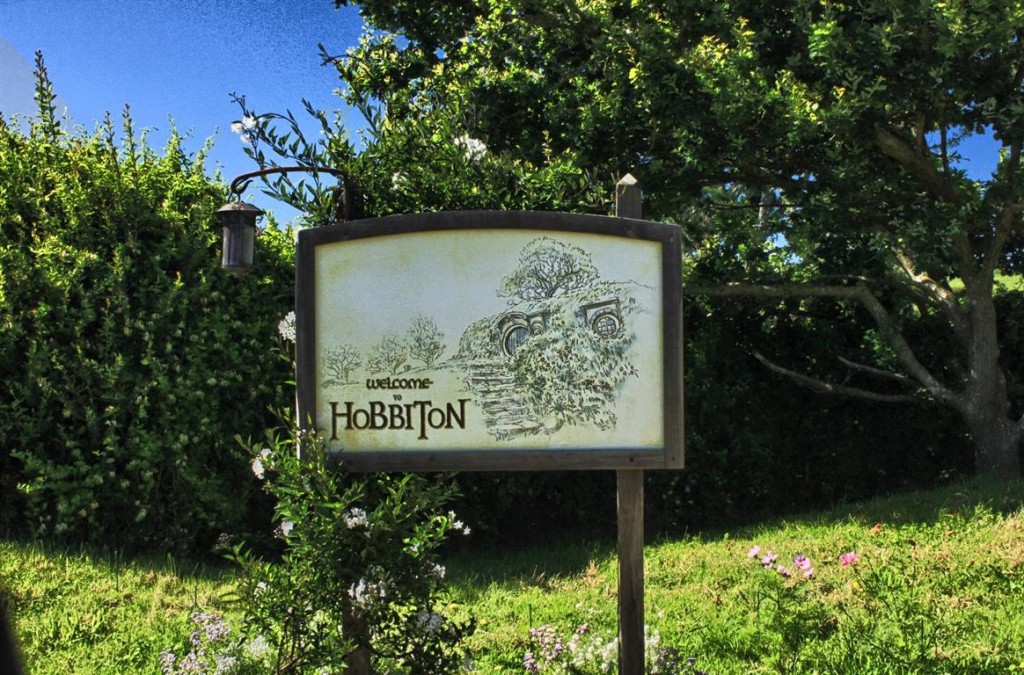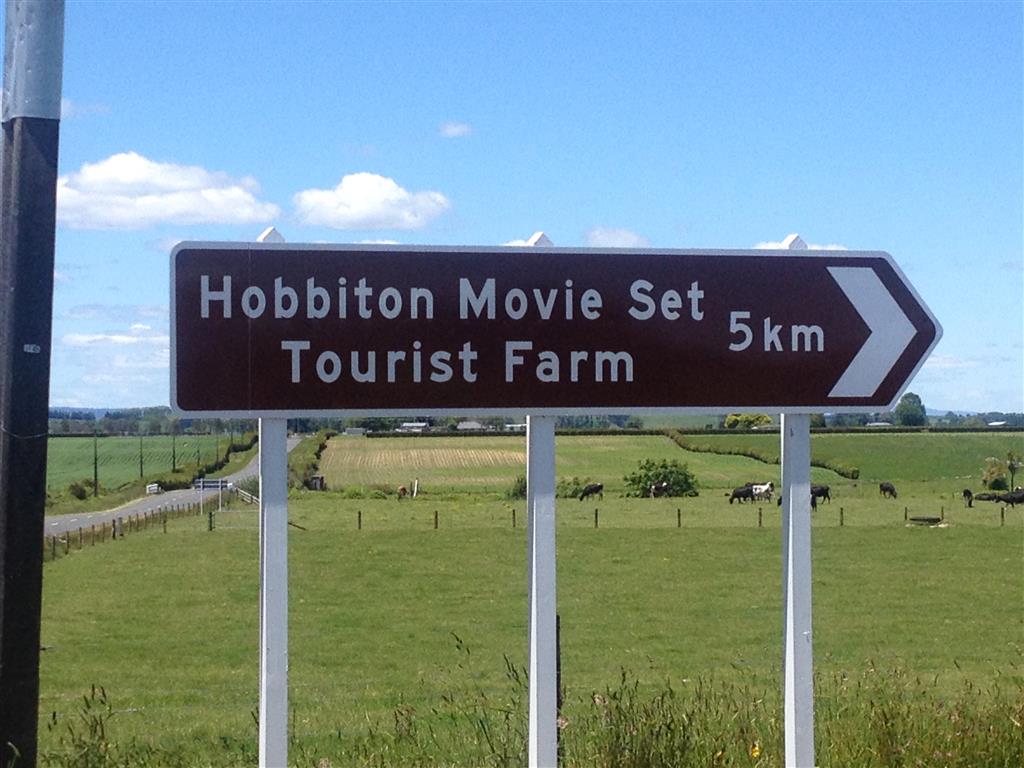We went to Hobbiton today, or more precisely the film set where the movies were made.
It was expensive to go on a 2 hour tour ($75), but it wasn’t tacky despite the large number of people going through, and it was definitely worth it.
We booked for the first tour in order to have a bit more of the place free of people – worked to some extent I think. We went around in groups of 35, driven to the site in busses, and guided round by a young woman who was happily not too fussed about us lagging behind to take photos. She was worth listening to however, since she told us some interesting things about the set.
I think the whole experience was successful because of the care that went into making the set, and the extraordinary detail with which it was imbued. In addition there is a small army of keepers who ensure that everything is fresh – the flowers, the vegetables, the clothes and props around the hobbit holes. It really seemed as if we were looking around a village where the inhabitants were away for the day – the little touches gave the impression of a vibrant life in the community, even though the hobbit holes were actually just facades. Nevertheless the grass was green, the flowers were real and tended in a natural disarray in the gardens, and the tools were clearly in use, just set down while the owner had lunch for example.
One of the things we hadn’t realised is the tricks that went into making the size of the hobbits realistic – the holes were made 100%, 60% and 40% size (and everything around them cut down accordingly). Children were used as extras, dressed as hobbits, to occupy the smaller holes. The few proper sized holes were used, with perspective tricks, for scenes with Gandalf and Bilbo – Bilbo’s hole at the top for instance.
The more I saw, the more impressed I was about the realism of the place. No effort was spared to make things look real – the clothes on the lines were the ones worn by the extras, but, since they would fade the were treated with something to keep them fresh, and replaced when they got worn.
It’s bit business, about 500 people per day, say an average of $50 each, for, say 150 full days per year gives them an income of about $3.75M per year. From which they pay all the staff and upkeep, but there’s no doubt still a healthy profit in it.
The set was built by the army as a ‘training exercise’ courtesy of the then PM since funds were running low for the movie. Quite a bit of excavation and a big road was made, and clearly now there is more to come, presumably since it is successful.
I met Tolkein when I was a teenager. My father was having his hip done in the Nuffield Orthopaedic Hospital in Oxford, and Tolkein had broken his ankle. The two were in adjacent rooms and the two old guys got on well together during their rehabilitation. I had just read Lord of the Rings, and so was mighty impressed by the chance of meeting the author. He was a kindly old man, and patient with an eager teenager. He signed an autograph for me with ‘A star shines on the hour of our meeting’ in Elven writing. I asked him what it meant when he’d written it – ‘go and find out’ he said, with a smile. And I did of course – nice thought. I think he would have liked Hobbiton today – not perhaps the crowds and the commercialism, but the whole thing seems to have been done exactly right.
And it was just what I’d imagined 50 years ago when I first read the books.


